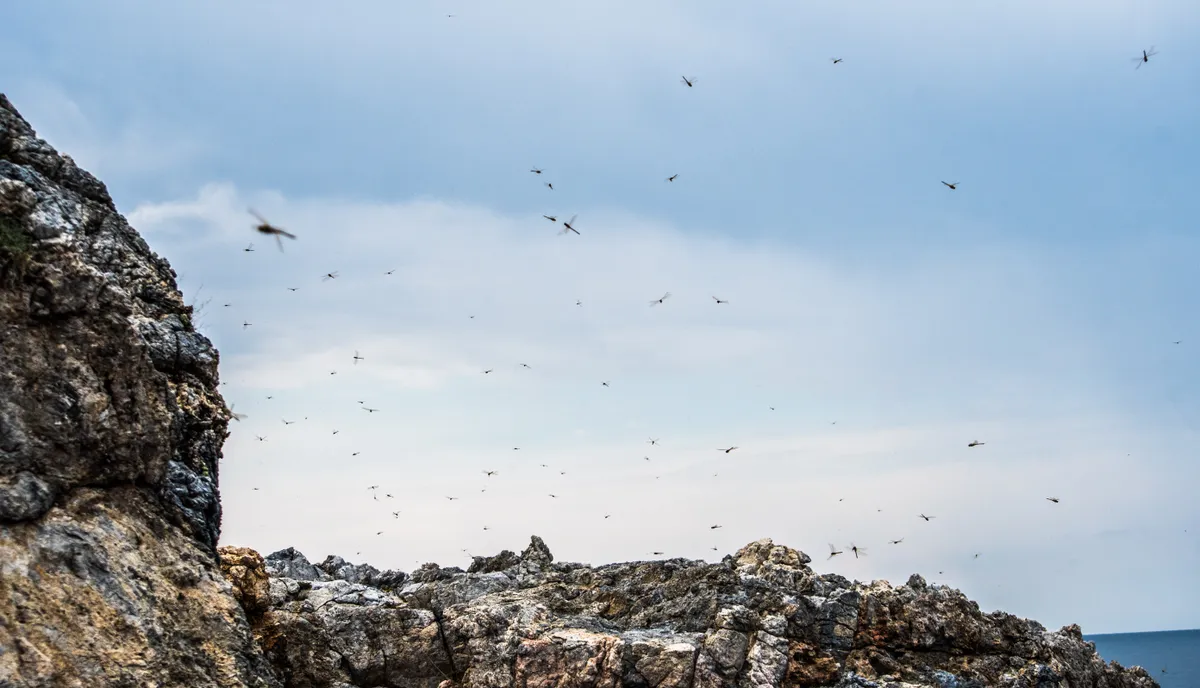Think of mass migrations of wildlife and you might likely picture large animals on the move or huge flocks of birds. But tiny creatures can be equally impressive for the sheer numbers making long-distance journeys, reports Ecography.
Such insect migrations are the focus of current PhD research by Will Hawkes, based at the University of Exeter’s Penryn Campus in Cornwall. His work includes studying how some very small insects, such as hoverflies, make very long journeys as part of large migratory groups.

But nothing prepared Will and fellow observers for what they saw on a spring 2019 visit to north-east Cyprus. In just over one month, they recorded 39 million migratory insects arriving from Asia at the tip of the Karpaz Peninsula.
“I had never seen anything like it before,” says Will. “The sky was dark with insects and we were being pelted by migratory flies, to the extent that we had to shelter behind the car door.”

At one point, fellow researcher Karl Wotton reckoned the migration had reached a rate of 6,000 insects per metre every minute.
Vagrant emperor dragonflies and painted lady butterflies were part of the mass movement, but two-thirds of the insects were types of flies. These included hoverflies, some carrying orchid pollen, in what Will Hawkes describes as “cross-continental pollination.”
Such long-distance transfer of genetic material, with migrant insects acting as international couriers, could help plants to maintain diversity of genes.
In turn, says Will, this could be important as environmental conditions alter, further emphasising the importance of taking a global, holistic view of conservation.
Main image: Will Hawkes and his colleagues recorded millions of migratory insects – including rush veneer moths – arriving from Asia during a scientific study in Cyprus. © Will Hawkes
